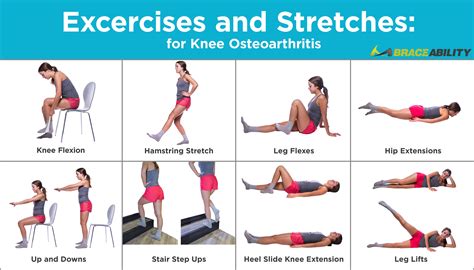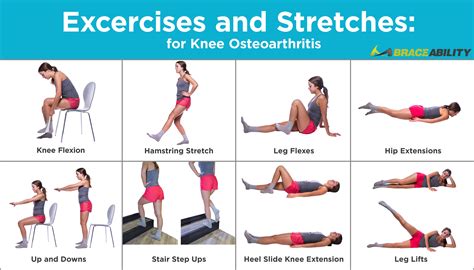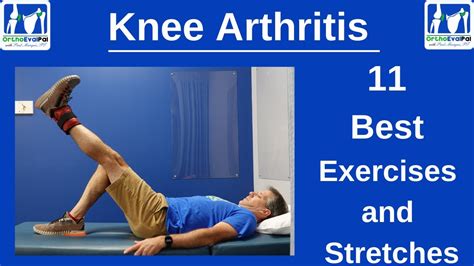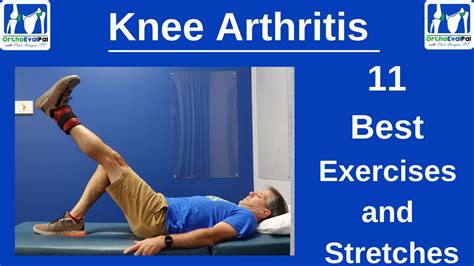Intro
Relieve arthritic knee pain with gentle exercises, improving joint mobility and reducing stiffness through low-impact activities like yoga and swimming, promoting healthy knee function.
Regular exercise is crucial for maintaining healthy joints, especially for individuals suffering from arthritic knees. Exercise can help reduce pain, improve mobility, and strengthen the muscles around the knee joint, making it more stable and resilient. In this article, we will delve into the importance of exercise for arthritic knees, discuss the benefits of various exercises, and provide a comprehensive guide on how to get started.
Arthritic knees can be a debilitating condition, affecting millions of people worldwide. The pain and stiffness associated with arthritic knees can make everyday activities challenging, leading to a sedentary lifestyle. However, avoiding exercise can exacerbate the condition, leading to further deterioration of the joint. On the other hand, regular exercise can help alleviate symptoms, improve joint function, and enhance overall quality of life. It is essential to understand the benefits of exercise for arthritic knees and incorporate physical activity into your daily routine.
Exercise can help reduce pain and stiffness in arthritic knees by increasing blood flow, reducing inflammation, and strengthening the surrounding muscles. Stronger muscles around the knee joint can help absorb shock, reduce pressure on the joint, and improve stability. Additionally, exercise can help improve joint mobility, making it easier to perform daily activities. With a well-structured exercise program, individuals with arthritic knees can experience significant improvements in their symptoms, allowing them to lead a more active and fulfilling life.
Benefits of Exercise for Arthritic Knees

- Reduced pain and stiffness
- Improved joint mobility and flexibility
- Strengthened muscles around the knee joint
- Enhanced stability and balance
- Improved overall physical function and quality of life
- Weight management, which can reduce pressure on the knee joint
It is essential to consult with a healthcare professional before starting any new exercise program, especially if you have arthritic knees. They can help you develop a personalized exercise plan that takes into account your specific needs, abilities, and health status.
Types of Exercise for Arthritic Knees

-
Aerobic Exercises
Aerobic exercises, such as walking, cycling, and swimming, can help improve cardiovascular health, reduce pain and stiffness, and enhance joint mobility. These exercises are low-impact, making them ideal for individuals with arthritic knees.
-
Strengthening Exercises
Strengthening exercises, such as squats, lunges, and leg presses, can help build strong muscles around the knee joint. This can improve joint stability, reduce pain, and enhance overall physical function.
-
Flexibility Exercises
Flexibility exercises, such as stretching and yoga, can help improve joint mobility and reduce stiffness. These exercises can be modified to accommodate individual needs and abilities.
-
Balance and Coordination Exercises
Balance and coordination exercises, such as tai chi and balance boards, can help improve stability and reduce the risk of falls.
Getting Started with Exercise for Arthritic Knees

- Consult with a healthcare professional to develop a personalized exercise plan.
- Start with low-impact exercises, such as walking or swimming, and gradually progress to more intense activities.
- Begin with short exercise sessions, such as 10-15 minutes, and gradually increase duration and frequency.
- Listen to your body and rest when needed. Exercise should not exacerbate pain or discomfort.
- Find an exercise buddy or join a support group to stay motivated and accountable.
Modifying Exercises for Arthritic Knees

- Use assistive devices, such as canes or walkers, to reduce pressure on the knee joint.
- Avoid high-impact exercises, such as running or jumping, which can exacerbate pain and discomfort.
- Use exercise machines or equipment that can help reduce strain on the knee joint.
- Modify exercises to reduce weight-bearing activities, such as using a stationary bike instead of walking.
Common Mistakes to Avoid when Exercising with Arthritic Knees

- Overexerting yourself, which can lead to increased pain and inflammation.
- Ignoring pain or discomfort, which can lead to further joint damage.
- Not warming up or cooling down properly, which can lead to muscle strains and injuries.
- Not listening to your body and resting when needed, which can lead to burnout and decreased motivation.
Conclusion and Next Steps

We invite you to share your experiences, ask questions, or provide feedback on this article. Your input is valuable to us, and we look forward to hearing from you. Additionally, we encourage you to explore other resources and articles on our website, which can provide further guidance and support on managing arthritic knees.
What are the best exercises for arthritic knees?
+The best exercises for arthritic knees include low-impact aerobic exercises, such as walking or swimming, strengthening exercises, such as squats or leg presses, and flexibility exercises, such as stretching or yoga.
How often should I exercise with arthritic knees?
+It is recommended to exercise at least 3-4 times per week, with a minimum of 30 minutes per session. However, it is essential to consult with a healthcare professional to develop a personalized exercise plan that takes into account your individual needs and abilities.
Can exercise worsen arthritic knees?
+Exercise can worsen arthritic knees if not done properly. It is essential to consult with a healthcare professional, start slowly, and modify exercises to accommodate your individual needs and abilities. Overexertion, ignoring pain or discomfort, and not listening to your body can exacerbate symptoms and worsen the condition.
